
When the 1938 re-issues of Dracula (1931) and Frankenstein (1931) bolstered the sagging fortunes of the “New Universal,” the studio set out with a fairly ambitious attempt to bring back the horror pictures for which the old Universal had been famous. (They also dropped the “New” tag, probably in hopes that it would be forgotten.) Before this inevitably degenerated into an assembly-line, B-picture approach, the studio made a few solid A pictures in the horror genre. The last of them, Joe May’s The Invisible Man Returns, was made in late 1939 and saw theater screens in January 1940. It was a fairly sizable production that ran 81 minutes (not entirely in its favor) and is notable for being Vincent Price’s first horror movie. Since Claude Rains’ Jack Griffin character in James Whale’s brilliant The Invisible Man (1933) was stone dead, this would be more a case of An Invisible Man Returns, but that would look dumb on a marquee, so they cheated a little. With typical expediency, in comes Griffin’s hitherto unheard-of brother Frank (John Sutton), who uses the invisibility formula to spring wrongly convicted Geoffrey Radcliffe (Price) from jail just before the poor guy’s about to hang. Frank does this, even though he knows that using the invisibility-granting drug inevitably leads to madness. The resulting film isn’t all that horrific, and it is almost completely devoid of the wit of Whale’s classic, but it’s nonetheless enjoyable and surprisingly atmospheric.
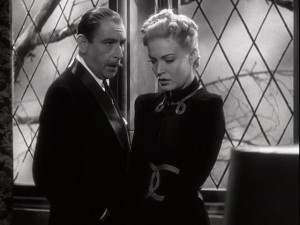
Director May—a prime mover in early German cinema, but by 1939 a refugee in Hollywood where he never quite made it—has clearly taken some cues from the style of Whale’s original. He frequently copies Whale’s trademark of staging scenes in front of windows, but he never captures the same feel, which may in part be the departure of Whale’s best art director, Charles D. Hall, not long after the arrival of the New Universal studio heads. (In fact, he left right after the debacle on Whale’s 1937 film The Road Back, on which the studio caved into pressure from the Nazi government to cut the film.) But whatever the reason, the effect isn’t as impressive as it was with Whale,
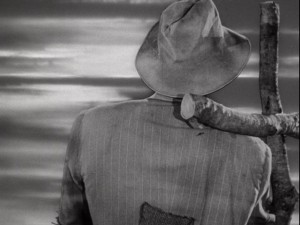
There are other instances where May just isn’t Whale. Even though he uses a studio set with a cyclorama-painted background that might be right out of a Whale picture (probably was left over from one) in the scene where the Invisible Man appropriates a suit of clothes from a scarecrow, May eschews using the remaining cross for a jolt of religious symbolism. There’s not a chance that Whale would have overlooked the potential of that shot—and it really wouldn’t have taken all that much to have been a great deal more powerful than it is. But all in all, May did make a handsome film with several strong moments that are at least as good as anything that would come from the remonkeyed studio in the 1940s.
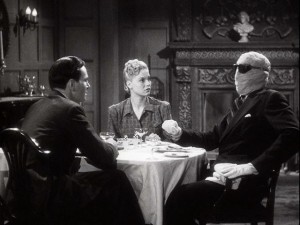
The film’s bigger downside lies in the Lester Cole-Curt Siodmak (here calling himself Kurt) screenplay. There’s a sense of sloppiness about it in that it can’t even get the name of the chemical in the formula that causes madness. In the original film, it was monocaine. Here it becomes duocaine (maybe it’s twice as dangerous?). A small thing, yes, but it’s not the best starting point. The need to keep the Invisible Man in the hero mode means, of course, that he’s not going to do any of the gleefully sociopathic things that Claude Rains tore into with such relish in 1933. Even so, they could have at least made him a little more menacing. As it stands, his single outburst of megalomania is—to put it mildly—on the tepid side. It seems unthinkable now, but it’s just possible that the then novice film actor Vincent Price was also just too restrained.
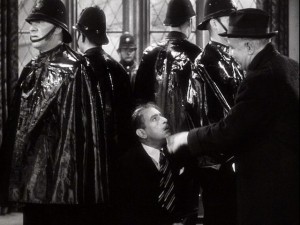
Very much on the plus side is Cecil Kellaway as the quirky and sympathetic Inspector Sampson, who is eternally puffing on a cigar in the hope that the smoke will reveal his supposedly murderous quarry (the guilt of whom he’s not entirely sure). Also of note is an almost unrecognizable Alan Napier as the sub-villain Willie Spears, who contributes to both the film’s most broadly comic scene and its grimmest one. But perhaps the absolute best thing about the film is the Frank Skinner-Hans J. Salter score. Yes, some of it is from Skinner’s Son of Frankenstein (1939), but there’s a good bit that was heard here for the first time—though we’d be hearing bits of it for several years to come.



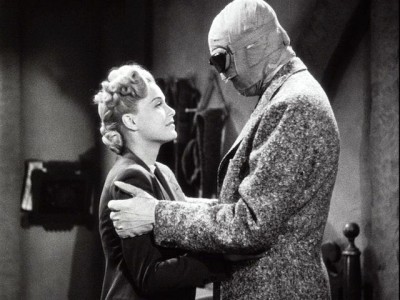
(They also dropped the “New” tag, probably in hopes that it would be forgotten.)
Does this mean there was a ‘Line Cinema’ studio at some point?
Perhaps not.